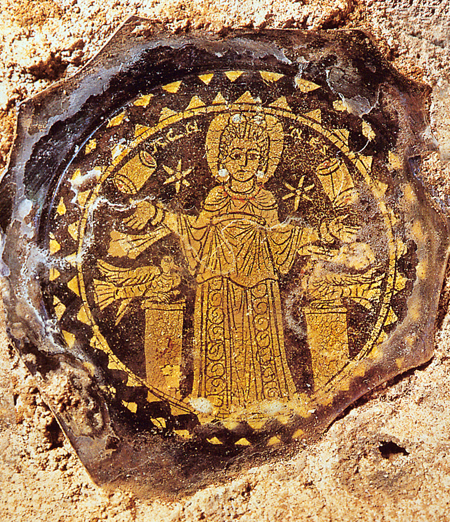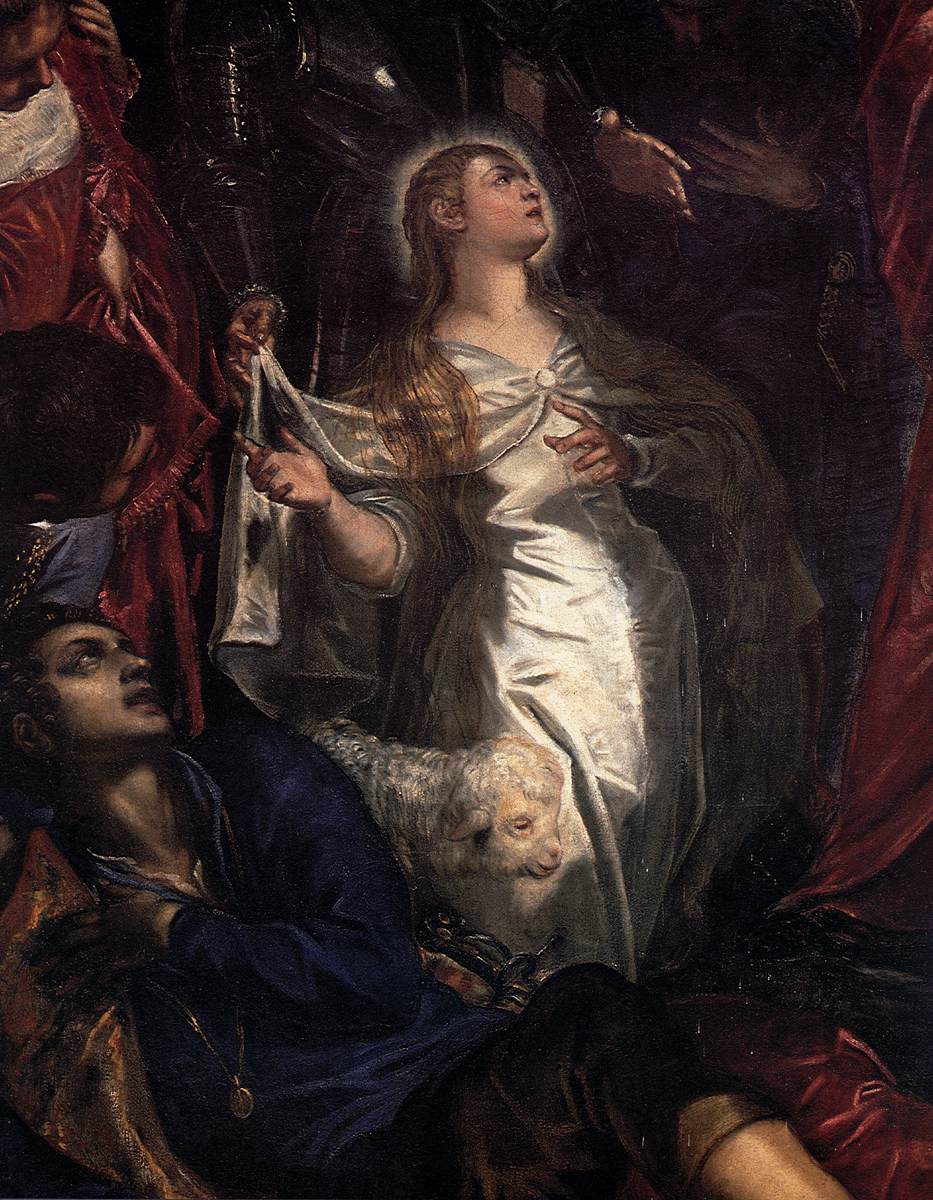21 January is the feast day of Saint Agnes (c. 291 – c. 304) in the Roman Catholic Church and has been venerated since the fourth century. She became a martyr at an early age (at 12 according to St. Ambrose and at 13 years old according to St. Augustine) in the years of the Emperor Diocletian, the years of the Christians’ prosecution. She martyred, apart from having confessed being a Christian, because she refused to be married and wanted to retain her virginity and purity; a Christian archetype for young girls.
Her name means “pure” in Greek, and maybe thus the iconographic association of the lamb; however, most probably, “Agnes” sounds like the Latin word of “lamb” which “agnus”. Agnus Dei (Lamb of God). This same lamb reference has likely produced the tradition of the Blessing of Lambs on St Agnes’s Day.
She is also depicted the martyr’s palm. The iconographic element of palm derives from the Book of Revelation.
They were wearing white robes and were holding palm branches in their hands. (Book of Revelation 7:9)
Yet, Duccio, for example (see picture above), portrays her holding a cross. It is the cross of martyrdom.
Whoever does not take up their cross and follow me is not worthy of me. Whoever finds their life will lose it, and whoever loses their life for my sake will find it. (Matthew 10:38-39)
Further reading
Jacobo de Voragine, William Granger Ryan (Translator), Eamon Duffy (Introduction). “Saint Agnes, Virgin.” The Golden Legend: Readings on the Saints, Princeton University Press, 2012, pp. 101–104.
.
Saint agnes, Catacomb of Pamphilus, Rome, 4th Century.
Duccio di Buoninsegna, Maestà (detail), 1308-11, Tempera on wood, Museo dell’ Opera del Duomo, Siena.
Fra Angelico, Coronation of the Virgin (detail), 1434-35, Tempera on panel, Musée du Louvre, Paris.
Vincenzo Foppa, Saints Agnes and Catherine of Alexandria, c. 1460, tempera and gold leaf on wood panel, The Walters Art Museum, Baltimore.
Tintoretto, The Miracle of Saint Agnes (detail), c.1577, oil on canvas, Madonna dell’ Orto, Venice.
Domenichino, Saint Agnes, c. 1620, Oil on canvas, Royal Collection, Windsor Castle.






